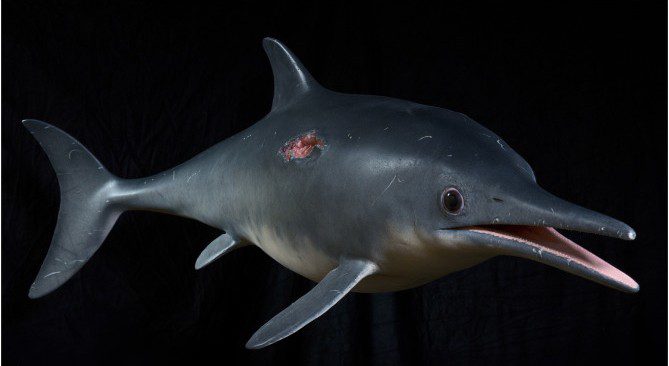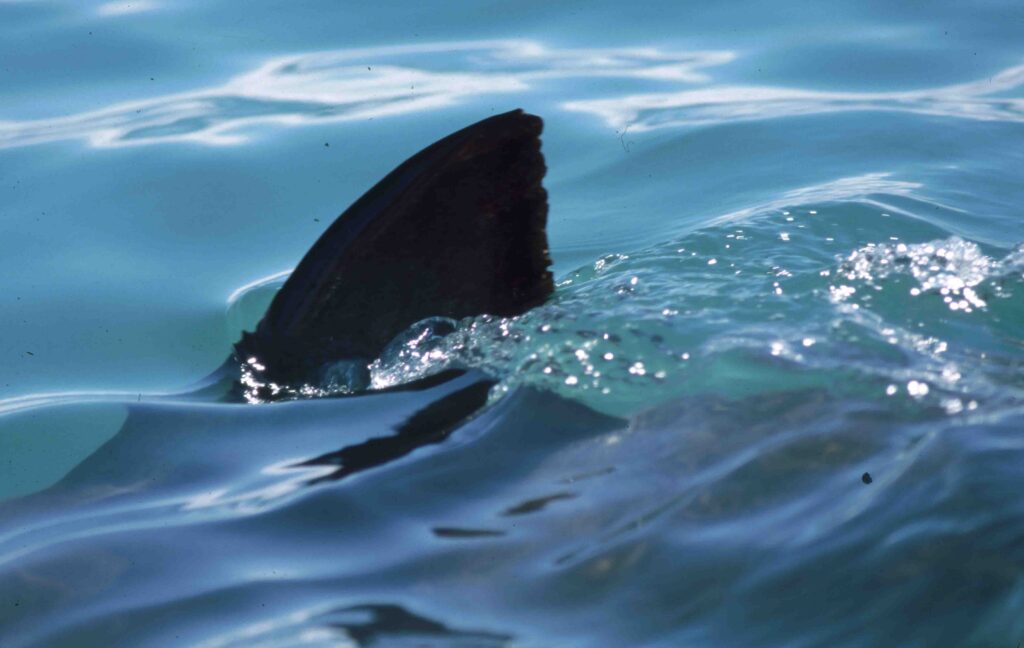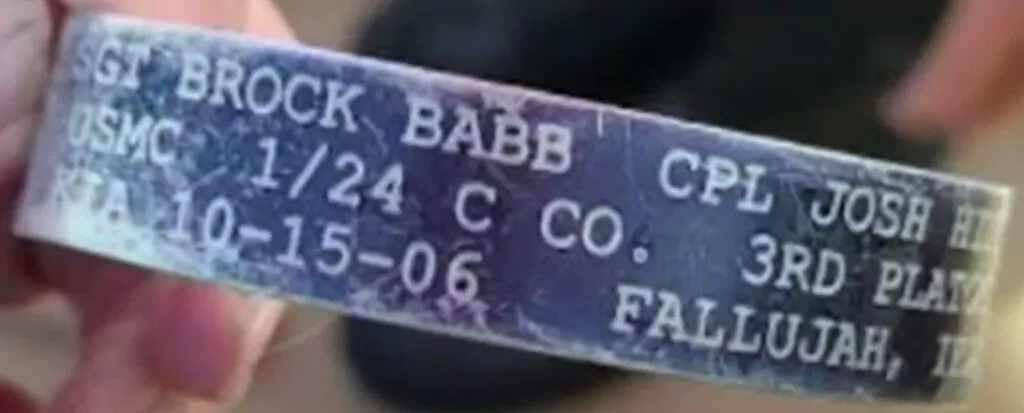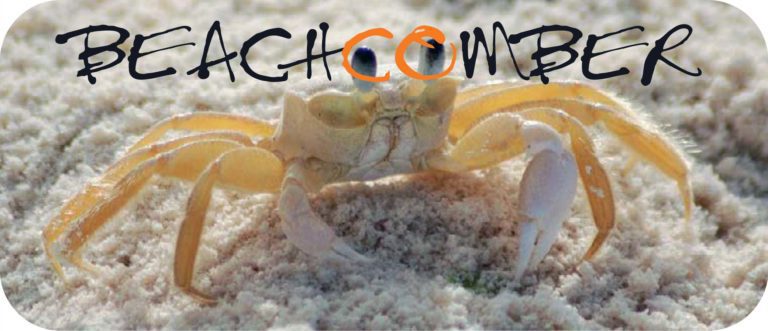When is it correct to thrust your fist hard into another diver’s groin?
It’s no joke. Shark bites are sometimes – very rarely – sustained by divers, and if that happens and the bite isn’t immediately fatal, then quick, decisive action by buddies and/or boat cover is essential.
Australian A&E doctor Nicholas Taylor, who has surface swimmers and surfers like himself mainly in mind, has come up with a simple but possibly life-saving technique to stop catastrophic blood-loss and we should all note how to do it – just in case.
It’s very simple – you push your fist in hard at the central point between the victim’s hipbone and the genitals or, as Dr Taylor’s catchy mnemonic has it, “between the hip and the bits”.
Then lock your arm straight and use your bodyweight to apply pressure until blood stops flowing from the wound. You have just closed off the femoral artery which, unlike tackling the wound itself, stops the victim bleeding out. Don’t be shy, just do it.
Slow reader

Better late than never, I suppose. In March 1975, Florida youth Barry Colbath became interested in the idea of learning to scuba dive, so he borrowed a copy of 130 Feet Down: Handbook for Hydronauts by Hank & Shaney Frey from his high-school library.
Looking at its cover, I can’t really see why it attracted young Barry – the publishers could hardly be accused of over-promising on the underwater world.
Anyway, either he was a very slow reader or else the contents proved no more fascinating than the wrapper, because he has only just got round to returning it.
“It seemed imperative that I needed to bring this book back,” Barry told a local reporter – seeming, 47 years on, to be straining the meaning of “imperative”.
But to be fair the book had gone AWOL and turned up only when his son was cleaning out his bedroom, which must have been in quite a state. Being that Barry was by now a middle-aged police sergeant, he rushed it over to the school the next morning.
Luckily the librarians found its belated return more amusing than heinous and agreed to spare Sgt Colbath the hefty $1,915.75 in fines he had accumulated. He handed over $20 anyway. Did Barry ever take up diving? We’re not told.
Insta-dive stars
I hadn’t realised that Sardine Run was a place, but South Africa’s annual diver attraction has just been ranked the most Insta-worthy scuba-diving spot in the world.
We have an unlikely source to thank for this wild-scuba insight – the Build Your Aquarium website, run by keen fish-keeper Jason Roberts.
Jason decided to determine the most Instagrammable scuba locations based on the number of hashtags generated from a seed-list of what various expert sources considered the 14 most popular sites.
Agulhas Bank off Durban (aka Sardine Run), where baitfish attract droves of spectacular pelagic predators every year, was found to boast 23,999 Instagram hashtags, narrowly beating Grand Bahamas’ sharky hotspot Tiger Beach by 616.
The Philippines’ Tubbataha Reef garnered half those numbers at 11,692, but then it is relatively inaccessible. The numbers keep dropping through Roca Partida in Mexico and Thailand’s Richelieu Rock. By the time we get to the good old Thistlegorm wreck in the Red Sea in eighth place we’re down below 3,000 hashtags. No sign of any UK inland sites, inexplicably.

Back to the drawing board

Don’t take the pictured reconstruction too literally – the scale might be right but perhaps not the look. Blockbuster movie The Meg took prehistoric shark size to the max, but a new study has shown that our assumption that megalodons looked like great whites on steroids might be wide of the mark.
Sharks consist mainly of soft tissue, and precious few traces of Otodus megalodon survive since the species died out 3.6 million years ago (it had a fair run – well over 11 million years). All we’ve found in the fossil record are vertebrae and teeth the size of Fury’s fists, indicating a shark that could grow up to 20m long.
University of California Riverside scientists have now taken us back to square one. We know that megalodons belonged to the Lamniform shark order, and previous visualisations were all based on five warm-blooded members of that family, but the UCR study of a whole range of its fin, head and body shapes (including cold-blooded Lamniforms too) proved that all we know is – zero.
“I encourage others to search for the ultimate treasure of a preserved megalodon fossil,” said UCR marine biologist Philip Sternes. So there’s your new diving challenge! Clue: it will be biggish. Failing that, stand by for Meg 2: The Trench.
Still smiling

It’s all down to those soft tissues. We might not know what a meg looked like, but “fish lizards” or icthyosaurs are another matter. These reptilian dolphins kept company with dinosaurs in the Mesozoic Era and lasted way longer than megs – about 160 million years. One fossil found almost complete in southern German shale has proved a gift for paleontologists.
A team at Lund University in Sweden asked sculptor Esben Horn to create a life-sized reconstruction of this species, Stenopterygius quadriscissus. It took him a year of clay modelling and 3D printing, but the researchers reckon the result, complete with realistic wound, is “a brilliant meeting of science and art, and the most up-to-date representation of an ichthyosaur yet”. It’s all in Earth-Science Reviews.
Pipe dreams
My birthday in early February seemed a bit early in the year to be hearing UK shark-spotting stories, and an exciting great white sighting off Ferring on the Sussex coast aroused ill-concealed derision among Littlehampton harbour personnel.
Photos of the classic dorsal fin menacing a popular beach near the mouth of the River Arun were circulated by local web-designer James Venn. He had thought it was a seal at first, but then followed Jaws’ apparent menacing progress through the water – dun dun dun dun dun dunnnnnnnnnnn…
The harbour authority saw it differently: “Before anyone else gets carried away about the ‘great white shark fin’ recently spotted off Ferring, that’s actually the end of a Ferring outfall pipe, which is a known hazard at low water, marked by the cardinal buoy visible in the background of the photo,” stated these spoilsports.
“Please note that it is not our intention to dispute the experience of any genuine experts looking at the photo,” they concluded, perhaps referring to the shark angler who had boldly asserted that it revealed an “undisputed shark”.

Diver’s anniversary gift

People are careless, and Lance Stehling reckoned he found no fewer than three lost Apple watches while scuba diving one day in Table Rock Lake, Missouri. Then, half-buried in silt on the 36m-deep lakebed, his torch lit up something different.
It was a US marine’s memorial bracelet and Stehling later posted its picture on a lake Facebook page.
It had been lost by Tim Lang of Lansing, Michigan just a week earlier. The amputee had undertaken an impulsive cliff-jump while on holiday at the lake, and had been upset to find that the bracelet had slipped off his wrist on impact.
In 2006 Lang had served with Charlie Company of the First Battalion, 24th Marines in Fallujah, Iraq, and on 15 October that year had been one of five occupants of a Humvee blown up by an IED.
Lang had lost a leg and his comrade Josh Bleill both of his. They were pulled to safety by an unnamed soldier, but Sgt Brock Babb and Lance-Cpl Josh Hines had been killed in the blast.
“Brock was our sergeant,” Bleill told KMOV. “He was like a father to all of us. He watched out for us, stepped up for us.” And Lang said that Hines had been “young, full of life, good-looking, great dude. Always had everybody laughing, and was just truly selfless.”
Lang had bought bracelets inscribed with the dead men’s names for himself and Bleill while they were recovering in hospital together. The pair had been reunited with their rescuer only recently at a veteran’s event, and when Lang, not a Facebook regular, went online to find photos of the occasion he was shocked to come across Stehling’s image of his missing memento.
“I was ecstatic and relieved that I didn’t have to worry about a person missing a very sentimental item,” said the diver after Lang had contacted him. He posted the bracelet back to its owner – and it so happened that it arrived exactly on the 15th anniversary of the explosion.
“It instantly changed the whole mood because I just felt them right with me,” said Tim Lang. “To me, that part is the most special.”

